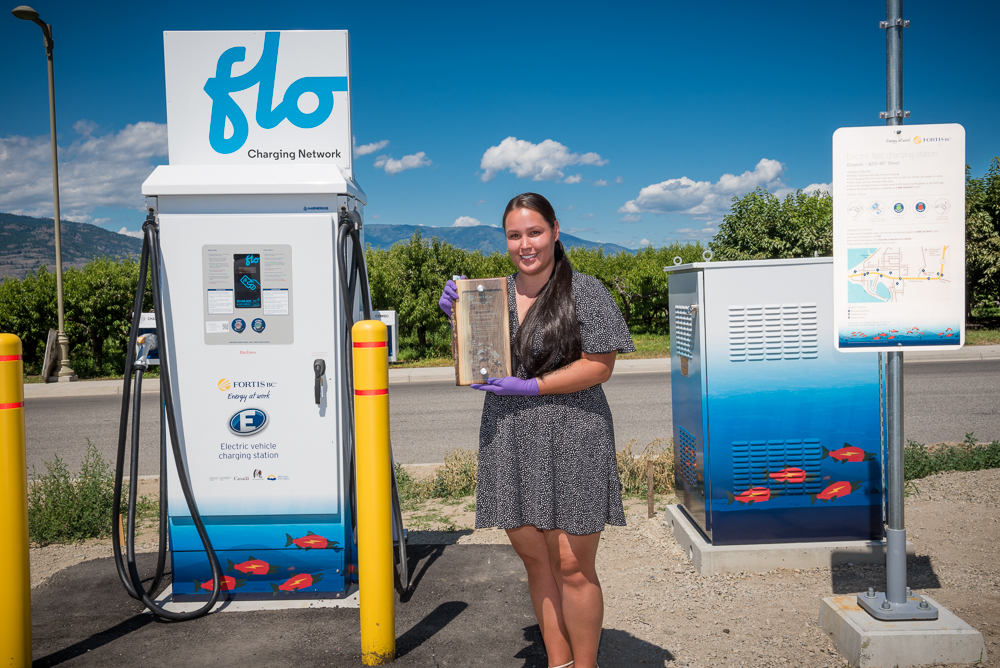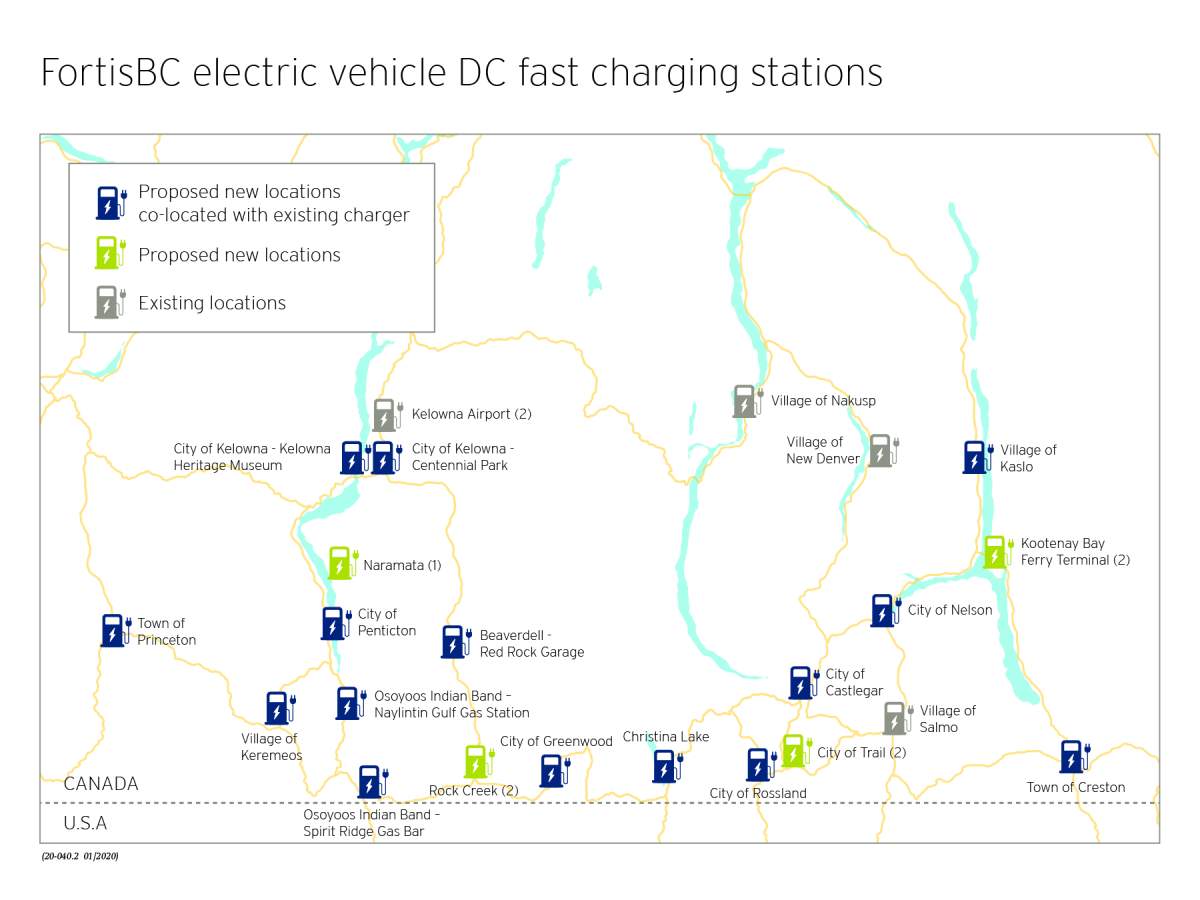It’s a major milestone for green transportation, as FortisBC installs its first publicly available, fast-charging electric vehicle stations in a B.C. First Nations community.

The two stations, located in Oliver and Osoyoos, are strategically placed to accommodate EV drivers using Interior routes to travel between the U.S. and Canada, or southern routes to travel between B.C.’s eastern and western regions.
They also allow for clean travel to B.C.’s wine region, which attracts thousands of tourists annually, said FortisBC.
The Oliver station is located along Highway 97 in proximity to Senkulmen Enterprise Park, a growing economic hub.
The Osoyoos station is located along Highway 3, in proximity to the Spirit Ridge Resort.
The 50-kilowatt stations are designed to provide highway-grade EV charging services for customers who need to charge their vehicles quicker than is possible from a Level-2 charger.
The DC fast-charging stations are available to the public 24 hours a day, seven days a week.
The cost to charge at all of FortisBC’s DC fast-charging stations is 30 cents per minute. It takes approximately 30 minutes to charge a battery.

“With climate change, having electrical charging stations all over Canada is important and we are very proud that the first ones on First Nations reserve occurred on the Osoyoos Indian Reserve,” said Chief Clarence Louie of the Osoyoos Indian Band.

Get breaking National news
Under the terms of the agreement, the Osoyoos Indian Band is providing the locations and FortisBC will own and manage the stations.
“It’s really important to us to encourage the adoption of electric vehicles in B.C.; it really does help reduce emissions in the transportation network,” said FortisBC spokesperson Nicole Brown.
FortisBC now owns and operates 23 stations across 14 communities in the southern interior, and there are 16 more stations under construction.
The power utility says expanding its network will address so-called “range anxiety” by ensuring there are charging stations along all travel routes.
“In order to choose an electrical vehicle, people need the assurance they can charge, if they want to go visit beautiful areas like this, and this will allow them to do so,” Brown said, while speaking to Global News in Oliver.
Louie says while the OIB may be the first to go green, he doesn’t expect they will be the last.
“They’re going to become like the gas stations,” he said. “They are going to be everywhere.”







Comments